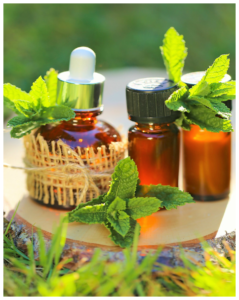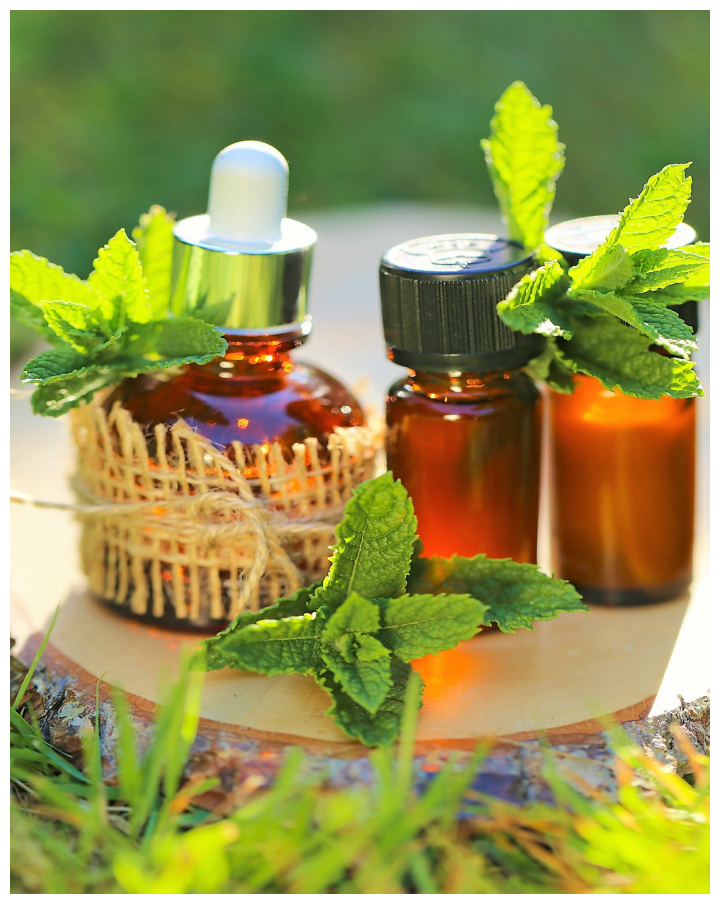Copaiba (Copaifera officinalis, C. reticulata, C. coriacea, C. langdorffii) essential oil is steam-distilled from oleoresin, a substance made up of resin and essential oils. It has a soft, sweet, balsamic odor.
Some properties of this oil include analgesic, powerful anti-inflammatory, antibacterial, antiseptic, antioxidant, and stimulant for the circulatory and pulmonary systems.
The oleoresin has traditionally been used for inflammation (internal and external), skin disorders, respiratory problems (including bronchitis and sinusitis), and urinary tract problems (including cystitis and bladder/kidney infections). It has also been used for bleeding, gonorrhea, hemorrhages, herpes, incontinence, insect bites, pain, pleurisy, sore throats, stomach ulcers, syphilis, tetanus, tonsillitis, tuberculosis, and tumors.
Today, copaiba essential oil is commonly used for acne, antioxidant, anxiety, inflammation, muscle aches, and pain. Copaiba may also help with colds, constipation, diarrhea, dyspepsia, edema, flatulence, flu, hemorrhoids, nervous exhaustion, piles, poor circulation, stiffness, and wounds.
The body systems affected by copaiba essential oil include the cardiovascular, respiratory, and nervous systems, muscles and bones, emotional balance, and skin.
Applications of Copaiba Essential Oil and Safety Data
Topical Application: Copaiba essential oil can be used neat (with no dilution). Dilute with carrier oil for children or those with sensitive skin. Apply to reflex points and/or directly on area of concern.
Aromatic Application: Diffuse, or inhale the aroma directly. The aroma of copaiba helps to elevate the mood and lift depression. It also helps to combat nervous tension, stress problems, and anxiety.
Internal Application: Copaiba essential oil can be taken internally via capsule or beverage. Try diluting 1 drop of copaiba essential oil in 1 tsp. (5 ml) honey or 4 oz. (125 ml) of beverage (such as non-dairy milk). It is not to be used for children under 6 years of age and should be used with caution and in greater dilution for children over 6 years of age.
Safey Note: Repeated use may result in contact sensitization. It may irritate sensitive skin in some individuals.
5 Ways to Use Copaiba Essential Oil
1. Diffuse
Try diffusing these blends to elevate your mood, lift depression, or combat nervous tension, stress, or anxiety.
2. Massage Blends:
Copaiba essential oil supports the respiratory and nervous systems, muscles and bones, and the skin. It also has the ability to magnify the effects of other essential oils. Because of these facts, copaiba essential oil is good to use in massage blends. You can simply add 1–2 drops of copaiba essential oil to any of your favorite essential oil massage recipes. Or you can try one of the following[wpbanner id=121711]
| Calming Massage: 5 drops chamomile 5 drops lavender 5 drops bergamot 2 drops copaiba 1 Tbsp. (15 ml) carrier oil* |
Sore Muscles Massage: 5 drops peppermint 5 drops lemongrass 4 drops marjoram 2 drops copaiba 1 Tbsp. (15 ml) carrier oil* |
*Common carrier oils for use in massage include Fractionated Coconut Oil, Coconut Oil, Sweet Almond Oil, and Jojoba Oil.
3. Skin/Facial Care:
Copaiba has powerful antioxidant and anti-inflammatory properties, which makes it ideal to use on the skin, especially the face—no matter your age or whether you are dealing with acne or wrinkles. Try this cream on your skin or face:
Facial Cream
- Servings: Yield=2 oz.
- Difficulty: Easy
Ingredients & Supplies:
- 1/4 oz. Beeswax Pellets (about 1 Tbsp.)
- 1 oz. Jojoba Oil or Sweet Almond Oil (about 2–3 Tbsp.)
- 1 oz. Coconut Oil (about 2 Tbsp.)
- 1/4 tsp. Vitamin E Oil (optional)
- 2 drops copaiba essential oil
- 5 drops neroli essential oil
- 5 drops lavender essential oil
- 5 drops frankincense essential oil
- Lotion pump bottle or salve jar
Instructions:
- In a double boiler (or a heat-proof glass measuring cup placed in a saucepan of water), melt the beeswax pellets over medium heat.
- Once melted, reduce the heat to low, and add coconut oil. Stir until melted again.
- Add jojoba oil or almond oil and vitamin E oil. Remove from heat, and stir until all combined.
- Allow to cool for 10 minutes.
- Stir in essential oils.
- If you’d like a whipped consistency, blend with a hand mixer or blender when completely cool.
- Pour into lotion bottles or salve jars.
- To use, rub facial cream on face after removing makeup.
http://blog.aromatools.com/2017/09/27/essential-oil-spotlight-copaiba/
Aromatherapy Essential Oils for Emotional Well-being
On its most basic, aromatherapy is an ancient healing practice that involves the use of volatile plant oils, commonly known as essential oils, for psychological and physical well-being. Although it is not considered as a miracle cure for serious emotional conditions, it is mainly the use of aromatherapy essential oils that can aid with certain emotional issues as it may enhance the emotional outlook and give support and balance the emotions during the day. This is the main reason that when someone thinks of the term “aromatherapy”, the use of the aromatherapy essential oils for emotional well-being is what often first thought.
The aromatherapy essential oils are basically composed of naturally occurring chemicals that function and work as a whole. Since they evaporate quickly, hence known as volatile, the molecules of the aromatherapy essential oils are easily and quickly taken through inhalation. It is the inhalation of these naturally occurring bonded chemicals that triggers out brain to react which then effects our emotions. Certain studies even found out that the inhalation of these molecules also gives physical benefit which may also function together to assist in our emotional state.

Put a little polish remover in it and then shake it! This helps add a few additional coats of polish.
One particular aromatherapy essential oil that is potent to affect our emotions is the sweet orange. According to certain studies, the fragrance of sweet orange greatly aids to provide emotional balance, bringing on a positive viewpoint. The sweet orange is a wonderful aromatherapy essential oil that can be applied alone or in a blend, specifically for those winter blues that often occur in the colder and grayer periods of the year. Aside from that, the aroma of sweet orange oil can also be blended nicely with a number of aromatherapy essential oils as it promotes added advantage of being one of the highly affordable aromatherapy essential oils. And, just like the lavender oil, this aromatherapy essential oil is regarded as one of the safest aromatherapy essential oils to employ.[wpbanner id=573]
Not all aromatherapy essential oils have the same level of emotional benefits for all sorts of persons. Several studies have found out that past memories related with certain aromas can have a positive or negative effect not only emotionally, but physically as well. It is basically in this sense that it is practically needed to follow all safety guidelines as well as safety issues regarding a particular aromatherapy essential oil before opting for one. And, perhaps the best move to take is to consider any list of aromatherapy essential oils applied for emotional well-being as a starting point and only use those oils that bring about the result that you long desire.




